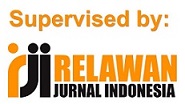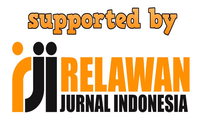TRANSLATING TABOO SPEECH ACT IN THE OMAR SERIES: A PRAGMATIC AND TECHNIQUE-BASED ANALYSIS OF ARABIC-INDONESIAN SUBTITLES
Abstract
Understanding the translation of taboo speech acts in audiovisual media is essential, particularly in contexts involving differing cultural norms and values. This study analyzes the translation strategies used to render taboo speech acts from Arabic into Indonesian in the Omar series. A descriptive qualitative approach was adopted using an embedded case study design. The data comprise 26 Arabic taboo utterances and their corresponding Indonesian subtitles. These utterances were categorized into nine types based on Jay’s (2009) typology, with the most frequent being insults related to perceived psychological, physical, or social deviations (19.2%). The translation techniques were examined using Molina and Albir’s (2002) framework, which revealed that reduction (25%) was the most applied strategy. A combination of single, double, and triple-technique applications was also observed across the dataset. These findings suggest that subtitles prioritize cultural acceptability over literal equivalence, employing strategies that mitigate potential offense while preserving the communicative intent of the source text.
Keywords
Full Text:
PDFReferences
Abdulaziz, Z., & Alsabbagh, A. (2023). Taboo language in bahraini Arabic. International Journal of Linguistics, Literature and Translation. https://doi.org/10.32996/ijllt
Al Farisi, M. Z. (2014). Pedoman Penerjemahan Arab-Indonesia: Strategi, metode, prosedur, teknik. Bandung: Remaja Rosdakarya.
Al-Farisi, M. Z. (2015). Aspek relevansi dalam terjemahan tindak-tutur kinâyah Al-Qur’an. KARSA: Jurnal Sosial dan Budaya Keislaman, 21(2), 161. https://doi.org/10.19105/karsa.v21i2.515
Allan, K., & Burridge, K. (2006). Forbidden words taboo and the censorin of language. Cambridge: Cambridge University Press.
Amelia, R. D., Ningshi, T. W. R., & Ayesa. (2023). Teknik penerjemahan pada judul berita media online berbahasa indonesia ke dalam bahasa mandarin. Jurnal Cakrawala Mandarin Asosiasi Program Studi Mandarin Indonesia, 7(1). http://dx.doi.org/10.36279/apsmi.v7i1.199
Ariani, Y. et al. (2020). Model pembelajaran inovasi untuk pembelajaran matematika di kelas iv sekolah dasar. Deepublish.
Aulia, N. R., Matra. N. K. W., & Putra, G. F. (2024). Taboo words used by the characters in murder mystery 2 movie. International Journal of Studies in International Education, 1(4), 22–43. https://doi.org/10.62951/ijsie.v1i4.92
Austin, John Langshaw. (1962). How to do things with words. Oxford: Oxford University Press.
Brown, P., & Levinson, S. C. (1987). Politeness: Some universals in language usage (Studies in Interactional Sociolinguistics). Cambridge University Press
Catford, J. C. (1965). A linguistic theory of translation: An essay in applied linguistics. Oxford: Oxford University Press.
Crystal, D. (1999). The Penguin dictionary of language. Penguin Books.
Fathurrohim, I. H., Nur, T., & Nugraha, T. C. (2024). Tuturan makian dalam film serial omar: Analisis sosiolinguistik. Kajian Linguistik Dan Sastra, 9(1), 1–23. https://doi.org/10.23917/kls.v9i1.4671
Hamidiyah, H. (2013). Tuturan tabu dalam film jepang tentang remaja. Paramasastra : Jurnal Ilmiah Bahasa Sastra Dan Pembelajarannya, 1(1). https://doi.org/10.26740/paramasastra.v1n1.p%p
Hartono, Rudi. (2017). Pengantar ilmu menerjemah (teori dan praktek penerjemahan). Semarang: Cipta Prima Nusantara
Hymes, D. (Ed.). (1974). Foundations in sociolinguistics: An ethnographic approach (1st ed.). Routledge. https://doi.org/10.4324/9781315888835
Jay, T. (2009). The utility and ubiquity of taboo words. Jurnal Perspective on Psychological Science, Volume 4, No. 2, 2009, Hlm. 153- 161
Larson, M. L. (1998). Meaning-based translation: A guide to cross-language equivalence (2nd ed.). University Press of America.
Mahsun. (2017). Metode penelitian bahasa. Jakarta: PT Raja GrafindoPersada
Molina, L., & Albir, A. H. (2002). Translation techniques revisited: A dynamic and functionalist approach. Meta: Journal Des Traducteurs Translators Journal, Vol. 47 (4).
Newmark, P. (1988). A textbook of translation. London: Prentice Hall.
Olimat, S. N., Mahadin, D. K., Mashaqba, B., & Al-Adwan, A. (2023). Subtitling sensitive arabic language for english audiences: A case study of netflix’s jinn and al-rawabi shows. Ampersand, 11, 100142. https://doi.org/10.1016/j.amper.2023.100142
Pahamzah, J., & Syariifah, A. (2019). Translation techniques of subtitling: A case for trolls movie. Journal of English Language Teaching and Cultural Studies, 2(2) 86-95. https://dx.doi.org/10.48181/jelts.v2i2.9097
Pratama, A. Y. (2016). Pengaruh disiplin, kreativitas dan motivasi terhadap disiplin kerja pegawai di badan kesatuan bangsa dan politik kabupaten kutai timur. eJournal Pemerintah Integratif, 4 (4): 462-476
Sari, R. P. (2020). Kata-kata tabu dalam novel seperti dendam, rindu harus dibayar tuntas karya eka kurniawan (tinjauan antropolinguistik). BAPALA, 12(1).
Syihabuddin, & Aryanti, T. (2023). The study of translation ideology and its accuracy in qur’anic vocabulary for women. Arabiyat : Jurnal Pendidikan Bahasa Arab Dan Kebahasaaraban. https://doi.org/10.15408/a.v10i2.34974
Thawabteh, M. A., Al-Adwan, A., & Shqair, A. (2022). Subtitling arabic profanities into english and that aggro: The case of west beirut. Heliyon, 8(12), e11953. https://doi.org/10.1016/j.heliyon.2022.e11953
DOI: https://doi.org/10.30743/ll.v9i1.11265
Refbacks
- There are currently no refbacks.
Fakultas Sastra
Universitas Islam Sumatera Utara (UISU), Medan
Jl. Sisingamangaraja Teladan Medan 20217
Telp. (061) 7869911, e-mail: language_literacy@sastra.uisu.ac.id









